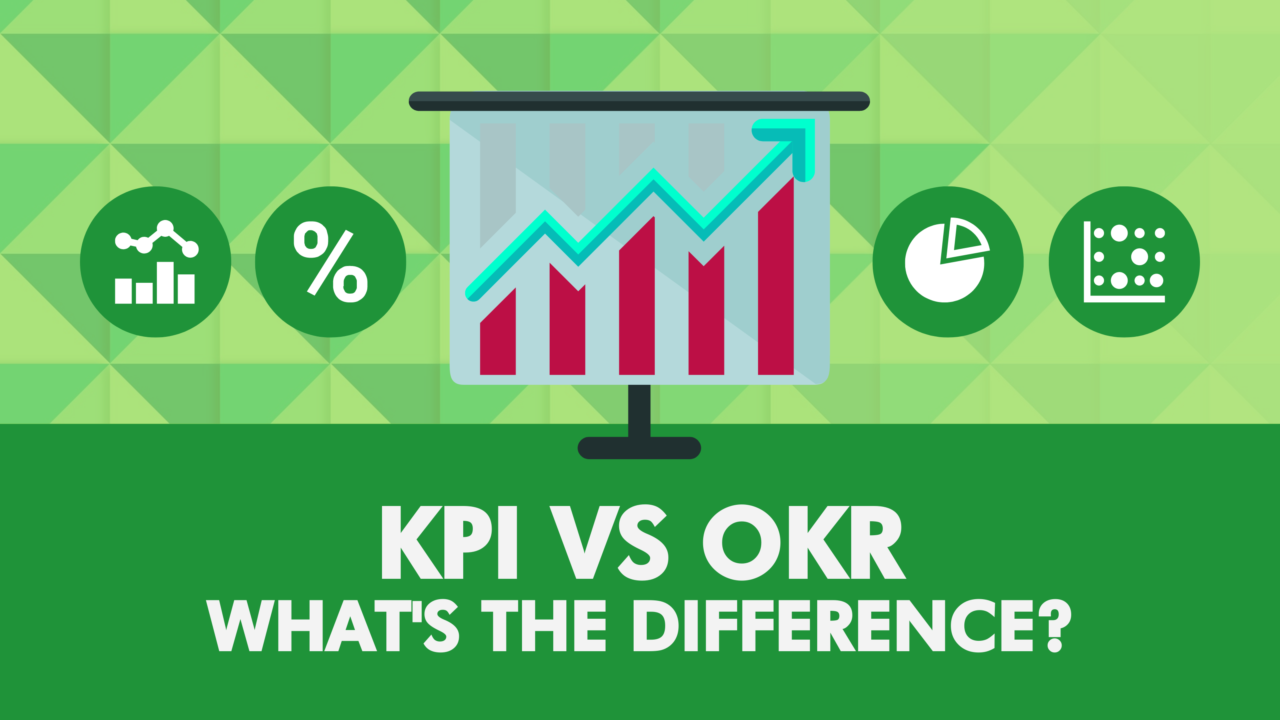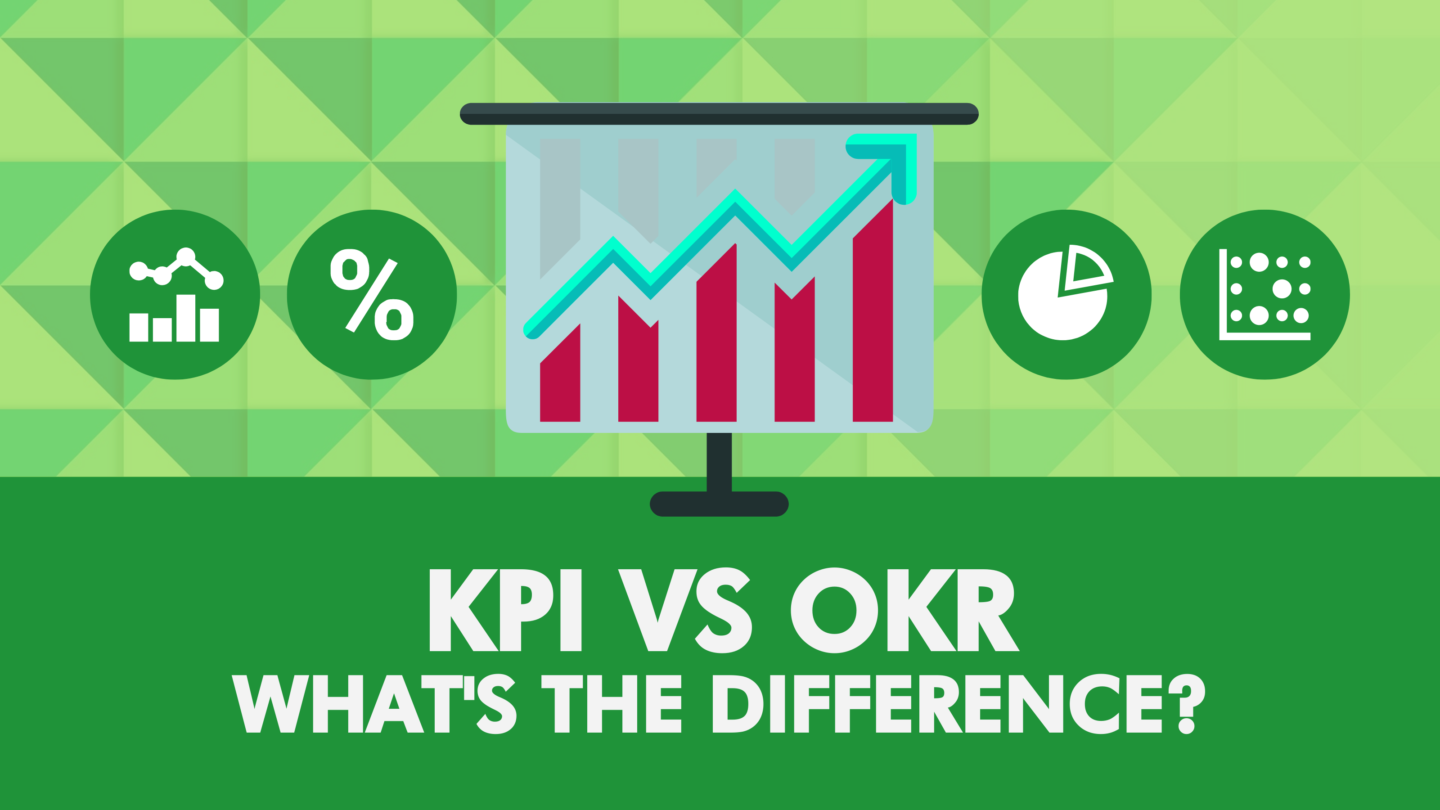
KPI vs OKR – What’s the difference?
In order for a business to be – and remain – successful, it must be constantly improving. Whether by hiring and training new team members, implementing new strategies, or achieving goals and targets, the only way to stay relevant is to adapt – and to adapt, you must have a plan for the future. This is where Key Performance Indicators (KPIs) and Objectives and Key Results (OKRs) come into play. The KPI vs OKR comparison is one that is frequently made, so it’s worth understanding how to use both.
What is a KPI?
As mentioned above, KPI stands for Key Performance Indicators. This term is used to refer to all the statistics one would measure in order to gauge how well a specific organization or project is doing. They can be implemented in order to measure things such as social media metrics, sales goals, call response rates, and more.
An important aspect to note pertaining to KPIs is that each business will need to tailor them to their own needs. Merely taking another business’s KPI model and implementing it will likely fail, as they will have different objectives than you. KPIs should not only reflect these objectives, but also the steps you plan on taking to achieve them, and who will be using this information.
Let’s look at an example. Say your KPI is meant to measure the percentage of missed calls from your customer service team. It might look like this:
KPI for Missed-call Percentage
- Goal: Keep missed-call percentages below 10%
- Result: More customers will be answered, leading to more profit
- Steps to achieve this: Scheduling additional CSRs to be on the phones, rewarding lowest percentage, etc.
- Who is responsible: The CSR Manager will be responsible for monitoring this
- Review: How often/when will the status of this project be reviewed
How does this compare to an OKR? Where does this leave us in the KPI vs OKR debate? Let’s talk about OKRs before we get into the comparison.
What is an OKR?
Objectives and Key Results are basically what they sound like: a goal is established, and indicators as to whether the team has made progress are reviewed. OKRs are typically used to outline aggressive goals – not unreachable, but ones that will push the team to work hard towards achieving them. They are usually quarterly goals, but can be used for annual planning as well.
OKRs can be set at a company, team, or even an individual level. They are comprised of three parts – the objective, the key results, and the initiatives. Let’s see an example of a team OKR:
OKR for Customer Service
- Objective: this is where you want to get to/what you want to accomplish. For this example, your objective might be to improve feedback on customer service team.
- Key Results: these are how you know you’re getting to your goal. In this case, some might be increase net promoter score (NPS) from 65 to 75, get 100 five-star reviews, have satisfaction ratings be above 90%, etc.
- Initiatives: this is how you will get to your goal. For example: add a live chat option, hire more staff to answer phones, implement new training, etc.
An individual-based OKR would aim for slightly smaller goals, yet still aggressive for just one person. One example could be:
OKR for Individual
- Objective: Increase your presence on social media
- Key results: Get 100 Facebook ‘likes’ per week, have 10 new people subscribe to your YouTube channel each day, be retweeted 15 times per tweet, etc.
- Initiatives: Post to FB at least once per day, put out two new videos each week, schedule tweets every two hours, etc.
Now that both strategies are defined, let’s take a look at how KPI vs OKR methods compare.

KPI vs OKR – What are the differences & which should I use?
While both KPIs and OKRs are strategies used in goal setting, they do have their differences. As illustrated above, KPIs are used to measure the metrics of programs, activities, etc. that are already in place, and have very achievable goals. OKRs deal with much more aggressively monitored, ambitious objectives – the ultimate goal, so to speak. If a business is looking at the larger picture and attempting to change direction, OKRs will get them there.
As to the question of which to use, the answer is both. As mentioned, KPIs and OKRs are used in different situations. When making action plans towards a goal, each situation should be analyzed in order to determine which strategy is more viable. If it’s a process that is already in progress, or has been done before, a KPI is likely suitable in order to improve upon it. If it is a bold new idea, with large goals that require progress-tracking or an entire change of direction for the company, an OKR is the way to go.
Despite their differences, a KPI vs OKR mentality need not be applied. KPIs and OKRs don’t have to be mutually exclusive. In fact, KPIs that need improvement often can become a Key Result in an OKR. Let’s take a look at the example from above:
KPI for Missed-calls percentage
- Goal: Keep missed-call percentages below 10%
This is all well and good as long as the percentages meet the target, but what if they’re stuck at a 15% missed-call rate? This could be indicative of a larger problem, which requires an OKR. For example:
OKR for Customer Service
- Objective: Improve overall customer service efficiency
- Key result(s): Keep missed-call percentages below 10%
So now the KPI that needed improvement has become a Key Result in the OKR to address the larger goal – improving customer service over all.
Importance of Review
Regardless of whether your specific goal requires a KPI or an OKR, it is very important to implement processes that will measure and continually review performance. Monitored progress with regular task reviews that track performance deliver the most successful results.




